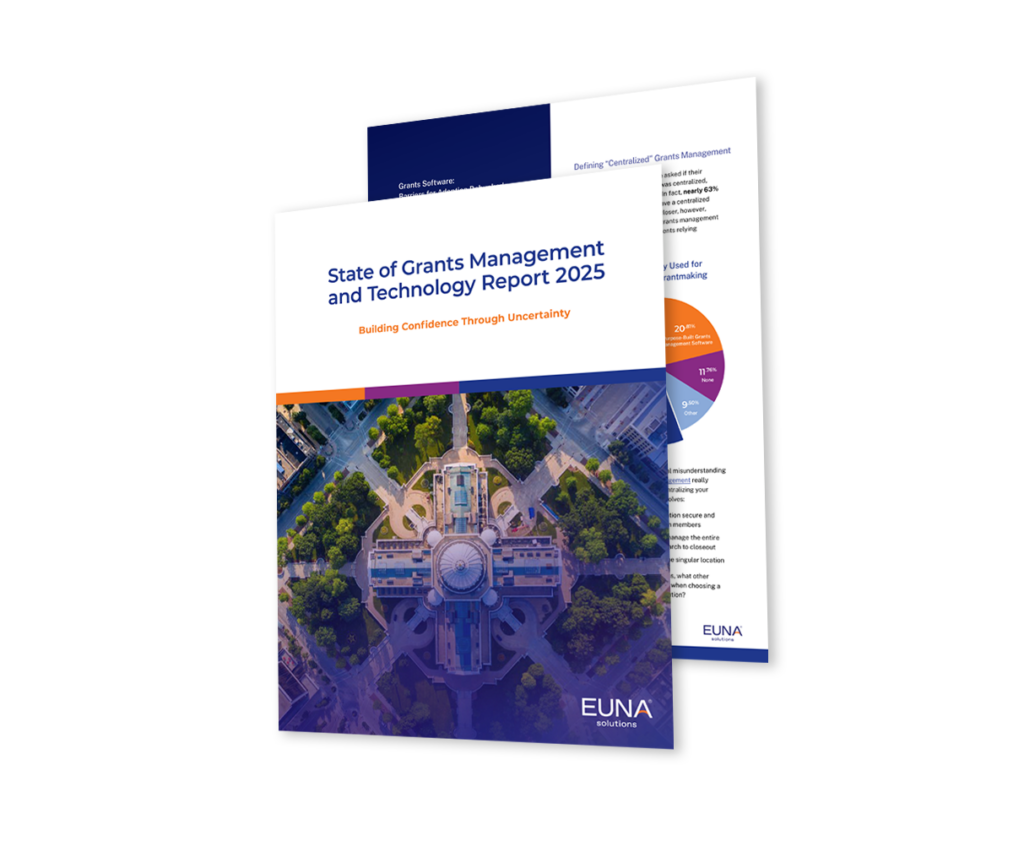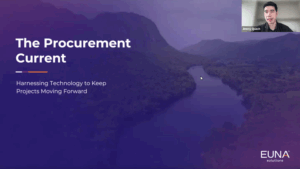Earlier this month, we hosted an insightful webinar in collaboration with NIGP, and the energy was palpable! The focus? How 2025 is shaping up to be the year where collaboration transforms procurement as we know it. Imagine a future where your team operates as a seamless unit, supplier relationships thrive like never before, and achieving your strategic goals feels not just possible—but inevitable. Sound exciting? That’s just the beginning. In this blog, we’re unpacking the standout moments from our discussion, showing you how the right mix of collaboration and task management can reinvent your procurement process and set you on the path to success.
Curious to catch the whole conversation? Download the recording and jump in. For now, let’s dig into the highlights!
The Importance of Collaboration in Procurement
Procurement is rarely a solo endeavor. It involves multiple stakeholders, cross-functional teams, and external suppliers, all of whom need to align to ensure successful outcomes. Collaboration is what bridges these entities, enabling clarity, alignment, and mutual accountability.
Collaborative procurement extends beyond mere transaction management; it establishes a strategic framework that drives measurable results across organizations. By emphasizing partnerships, transparency, and shared goals, collaborative procurement offers distinct benefits:
- Enhanced Strategic Alignment: Bringing key stakeholders into the procurement process ensures alignment with overall organizational priorities, creating procurement strategies that deliver value across all levels.
- Data-Driven Decision Making: Collaboration fosters better access to shared data and insights, empowering procurement teams to make well-informed, strategic decisions that optimize value and reduce uncertainty.
- Flexibility and Resilience: By working together, procurement teams and suppliers can adapt more effectively to market fluctuations, ensuring continuous supply while maintaining cost control.
- Building Long-Term Relationships: Collaborative efforts lead to dedicated partnerships with suppliers, fostering goodwill, loyalty, and innovation that benefit all parties involved.
Collaboration isn’t just a “nice to have” in procurement—it’s the engine that powers smooth operations, strategic alignment, and shared success across roles. Here’s how collaboration makes a measurable impact for each group involved in the procurement process:
Buyers – Managing Complex Internal Workflows
Buyers are often at the center of a web of tasks, approvals, and shifting priorities. Without clear collaboration, internal workflows can quickly become disjointed—checklists fall out of sync, deadlines slip, and critical steps get overlooked. The challenge isn’t just managing the process, but aligning everyone involved around shared timelines and responsibilities. Collaboration is the glue that keeps the internal machine running smoothly.
Agency Staff (SMEs) – Balancing Expertise with Limited Time
Subject matter experts are asked to weigh in on evaluations while juggling their day-to-day responsibilities. Without a streamlined, collaborative approach, they face unclear expectations, information overload, and disconnected scoring processes. The risk? Tedious evaluations and delayed decisions. SMEs need a collaborative framework that respects their time while ensuring their input remains central to supplier selection.
Other Agencies – Bridging Gaps with Shared Knowledge
Agencies often face similar procurement challenges—but without consistent collaboration, each is left to reinvent the wheel. The lack of connection leads to missed opportunities to learn from one another, reuse proven templates, or align on best practices. When agencies don’t regularly collaborate, procurement processes become fragmented, and valuable efficiencies are lost. There’s a growing need for peer-to-peer engagement—sharing templates, lessons learned, and sourcing strategies—to elevate outcomes across the broader public sector.
Task Management in Action: How Purpose-Built Sourcing Solutions Enhance Stakeholder Collaboration

Run Bids and RFPs Faster
Purpose-built software to support the procurement process can be a force multiplier for procurement teams—not only through internal efficiency but also to make it easier to get stakeholders involved and ensure alignment.
By bringing the procurement process onto a cloud-based platform, teams can greatly reduce the amount of time spent on manual tasks (for example, distributing proposal or tabulating scores) and in-person meetings. With greater efficiency, procurement teams can facilitate faster project cycle times and deliver products/services to stakeholders sooner.
Provide a Central Online Location for Collaboration
From drafting specifications to awarding a decision, every step of the bid and RFP process is centralized in one online location. As a result, buyers and stakeholders have a convenient home base to collaborate virtually on specification development, access project details, communicate, and ensure everyone has the information they need to make informed decisions
Make it Easier for Evaluators to Participate
Sorting through paper files and scrolling through spreadsheets to complete scoring is tedious and time-consuming.
Purpose-built sourcing platforms provide a cloud-based interface for evaluators to log in, access proposals, and complete scoring online at their convenience. Buyers can segment proposal information, so evaluators only see the information that is relevant to their job—making it easy to get in, contribute their expertise to the evaluation, and get back to the strategic aspect of their job.
Facilitate a Timely Evaluation Process
Purpose-built sourcing software equips procurement teams with more visibility into their procurement process, for proactive rather than reactive management.
Real-time dashboards on evaluators’ scoring progress help buyers keep projects on the timeline, while high-level KPIs make it possible to accurately forecast future procurement needs and set expectations for stakeholders.
3 Helpful Tips for Collaborative Procurement
Collaborative procurement can revolutionize your organization’s approach to sourcing and supplier management. By fostering collaboration and utilizing key strategies to streamline processes, you’ll enhance efficiency, drive cost savings, and mitigate risks. Here are three actionable tips to integrate collaborative procurement into your efforts:
Tip 1: Leverage Technology to Strengthen Stakeholder and Supplier Management
Utilizing collaborative procurement software and advanced technology is essential for effective stakeholder management and supplier relationship management. Tools designed for document and data management allow procurement teams to maintain clarity and transparency in both internal and external operations. By leveraging technology, you can streamline processes such as task delegation, supplier onboarding, and performance tracking. Collaboration tools foster real-time communication and enhance collaboration between stakeholders and suppliers, ensuring procurement efforts remain aligned with organizational goals. Implementing key performance indicators (KPIs) to monitor supplier relationships and task progress will also help mitigate risks and build long-term, mutually beneficial partnerships.
Tip 2: Utilize Peer Templates and Proven Resources
One of the simplest ways to streamline procurement processes is by incorporating peer templates and leveraging proven resources. These tools provide a foundation for creating effective procurement strategies while fostering a collaborative culture. Whether you are piggybacking on a contract from a peer agency or leveraging a past successful solicitation from a neighboring agency, these resources help maintain consistency and efficiency. Sharing knowledge and proven workflows among teams reinforces collaborative buying practices and strengthens supplier relationships across the board.
Tip 3: Harness the Power of Cooperative Purchasing
Collaborative purchasing provides an excellent opportunity to gain cost savings and streamline procurement processes. By participating in cooperative buying arrangements, organizations can pool resources, foster collaboration, and access pre-negotiated contracts at competitive rates. The collective strength of cooperative procurement agreements not only reduces costs but also enhances supplier engagement and relationship management. Additionally, this approach minimizes procurement risks by tapping into well-vetted suppliers and established contracts. Whether working with local businesses, government contracts, or large entities, cooperative purchasing creates a framework that drives both efficiency and value while promoting a collaborative culture.
By incorporating these three tips into your strategy—leveraging technology, utilizing peer resources, and adopting cooperative purchasing—you can foster collaboration, enhance supplier relationships, and drive scalable success throughout your procurement processes.
Implement Collaborative Procurement Effectively with Euna Procurement
Effective task management is the foundation of a collaborative procurement process, and Euna Procurement empowers you to manage both internal tasks and external tasks with unmatched efficiency. By centralizing task assignments, deadlines, and progress tracking within a single platform, Euna Procurement ensures your team stays aligned and informed.
Not only does this enhance internal collaboration, but it also simplifies interactions with suppliers by providing a transparent and structured process. With features designed to eliminate bottlenecks and reduce administrative burdens, Euna Procurement saves you time and improves outcomes at every stage of the procurement lifecycle.
Learn how you can take control of your task management with Euna Procurement to drive seamless communication, better organization, and unmatched clarity in all your procurement activities.
Euna Solutions, a leader in government technology, designs, builds, delivers, and supports trusted procurement, payments, grants management, and budgeting software for the public sector.


